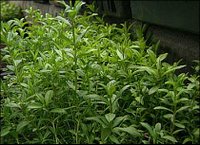Beginner Herb Gardening - Location, Location, Location

An excellent way to learn about herb gardening, and transition from beginner herb gardening to that of a seasoned pro, is basically trial and error. You just have to do it. Herbs are easy to grow and can provide a fresh array of accompaniment to your meals. What better way to zest up your food than by having a full-time selection of basil, oregano, or mint at your side?
There are of course a few items of preparation you want identify before selecting the herbs for your garden. Whether you're a "beginner herb gardening" novice or earned your green thumb, your first consideration is location. As with most plants, each herb has it's own needs for a proper environment in which to thrive. Does the area catch an abundant amount of sun during the day? Or is there a shady spot you'd like to utilize? Here's a list of popular herbs that need a full day of sun.
More Sun required:
- Basil: Tastes great as a compliment with fish, poultry, and beef dishes. An Italian favorite.
- Dill
- Garlic
- Lavender
- Lemon Grass
- Mint
- Oregano
- Rosemary
- Sage
- Tarragon
- Thyme
As with most plants you'll have to experiment on location. I have an area that has sun hitting it all day, but the soil needs some improvement. That is another topic of course. I've found that the following herbs grow well in my region, Washington State, with less sun.
Partial shade dwellers:
- Chives
- Cilantro
- Coriander
- Lemon Balm
- Parsley
- Turmeric
- Rosemary
- Sage
- Tarragon
- Thyme
Have fun playing with the location of your herbs. They are relatively inexpensive to grow. If one herb doesn't work well in your chosen area then try a different one. I was at a local grocery last week and they were selling herb starters for $5. It had three different varieties as I recall. Beginner herb gardening really isn't that difficult. What a simple way to get started!

0 Comments:
Post a Comment
<< Home